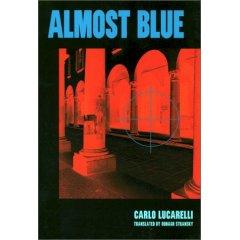
I've already mentioned Massimo Carlotto's first book to be translated into English, The Colombian Mule: now there's a second volume in the series, The Master of Knots. The title refers to the main plotline, having to do with the underground S & M scene in northern Italy. The unofficial detective agency, really a "gang," that is at the center of the series is made up of a bar owner and two of his friends (all 3 ex-cons, one of them a gangster and the other two "politicals"). The interplay among them (and a subplot concerning the protests surrounding a G8 conference in Genoa) are quite interesting, and the three shuttle back and forth across the northern half of Italy on their various detection errands. The main plot, however, is marred by several cliches (one that is getting to be quite annoying in the genre as a whole, the mythical "snuff film") and by a curiously offstage handling of the chief villain (the "master of knots," a bondage master who trained in Japan). The focus does remain with the detectives (chief among them the narrator, a bar owner identified as "Alligator" in the first novel, but mostly as a first-person voice in the second; in the first novel, the Colombian segment of the plot is narrated in the third person, shifting the focus away from the main characters, who are the most interesting aspect of the series. There is in both novels a considerable amount of discussion of prison (which annoys the gangster-detective, Beniamino Rossini, and threatens to annoy the reader as well), but the life-story of Carlotto (who like Alligator was imprisoned unjustly in a famous political case) informs the discussion and the overall plot as well: at least we know that he has first-hand knowledge of the milieu (of prison, the underworld, and the setting, which revolves around Padua). In case all of the above sounds like faint praise, I should make it clear that the novels are lively, not over-long, and that they include a great deal of interesting detail about Italy, Padua, and the fringes of the criminal underworld to keep them entertaining.





